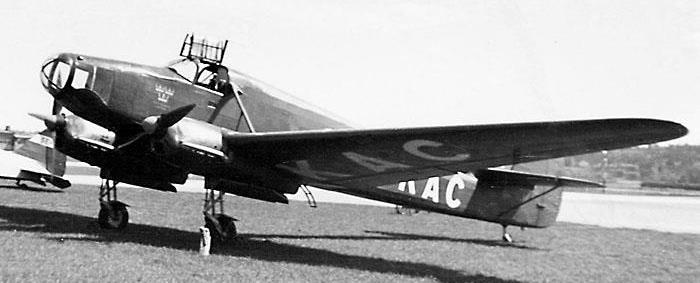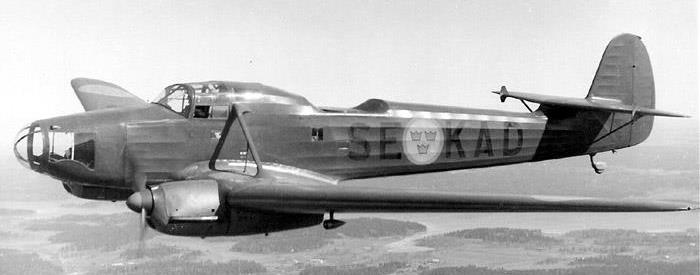Totally four Fw 58C were delivered to Sweden and RAK - with the restriction that they should be used exclusively for mapping service. Two were delivered in 1938 and 1940 respectively and were given the civil registrations SE-KAA and SE-KAB. As the aircraft were operated by the Air Force, they also carried the national roundel - the three crowns. They got the designation P 6, but no individual Air Force numbers.
The camera equipment consisted of a Zeiss Rb 20/30. The aircraft were painted in a lighter green than usually used at this time. The underside was light grey. A pilot and a photographer, sometimes joined by a mechanic, manned the P 6.
The P 6 were used intensely during the mapping season; i.e. spring, summer and early autumn. The demand increased still more after the outbreak of WWII. The delivery of SE-KAB in February 1940 was therefore a relief. Unfortunately SE-KAA crashed in the summer of 1943. The crew was saved but the aircraft was totally damaged.
Sweden now desperately needed new aircraft for aerial mapping. Luckily for us, Germany’s had an equivalent need for ball bearings. The annual trade agreement with Germany secured the delivery of two new Fw 58C to Sweden in exchange for more ball bearings to Germany.
The Swedish authorities approved the two new P 6 - SE-KAC and SE-KAD - in March 1944. When the war was over in the next spring, the demand of aerial mapping in fact increased. The civil market had found the advantages of the photographic map. On the same time, the mapping activity had got a more civilian nature. The pilots were now civilians. Some years later, also the maintenance of the aircraft was taken over by civilian contractors. New aircraft were bought from France (Nord NC 701 Martinet, a French copy of the German Siebel S204D) were purchased. In Sweden, they were usually called “the Siebels”.





| Type |
Werk.Nr |
Registration |
History |
| C |
|
SE-KAA |
Delivered in 1938 |
| C |
|
SE-KAB |
Delivered in 1938, crashed in the summer of 1943 |
| C |
|
SE-KAC |
Delivered in March 1944 |
| C |
|
SE-KAD |
Delivered in March 1944 |





